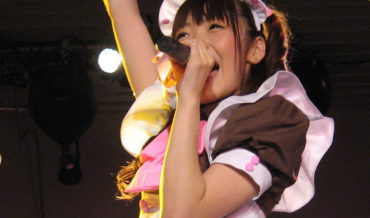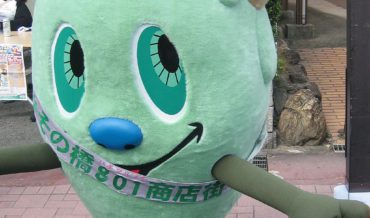Associate Professor, International Communication, Senshu University
In 2001, when cultural theorist Azuma Hiroki began his influential book about postmodernism with the sentence, “I suppose everyone has heard of ‘otaku’” (2009, 3), he was acknowledging decades of discourse in Japan. When the book was translated into English in 2009, the title was changed to Otaku, which speaks to decades of global interest in this aspect of Japan. Indeed, since appearing untranslated on the cover of the inaugural issue of Wired magazine in 1993, “otaku” made its way into the Oxford English Dictionary in 2007. Be it in Japan in 2001 or the Anglophone world in 2009, Azuma is perhaps right to assume that “everyone has heard of ‘otaku,’” but this does not mean that everyone knows what the word means. Further, the assumption of knowledge tends to reinforce received stereotypes and close down discussion. This is particularly problematic in the case of “otaku,” because the media has played such an important role, perhaps the most important role, in setting the parameters of discussion (Galbraith and Lamarre 2010, 362). Put plainly, discussions of “otaku” are all too often responding to and building on media representations, discourses, and fictions. If “otaku” has become a “taken-for-granted feature of the global cultural landscape” (Ito 2012, xxvii), then much, indeed too much, is taken for granted.[1]
The word “otaku,” which means “your home” and is used in some locales and settings as a second-person pronoun, came to be associated with the perceived excesses and perversions of fans in Japan in the early 1980s. Words such as “fan” (fan, for example fanjin, fanzine) and “maniac” (mania, for example manga mania, manga maniac) were already in circulation, and “otaku” was meant to refer to something different, strange, weird, unique, special, bad, wrong, and/or abnormal about certain fans and maniacs.
This comes out in a series of articles in Manga burikko, a comics magazine targeting fans of cute girl characters, which in many ways defined “otaku” (see Galbraith 2015). From June to August 1983, in his “‘Otaku’ Research” (“Otaku” no kenkyū) column, writer Nakamori Akio called out unfashionable and obsessive fans and highlighted practices such as attending fanzine conventions, costuming as characters, and lining up overnight to wait for the release of animated films. While Nakamori labeled everyone, from train spotters to idol chasers—men and women of all shapes and sizes with varied interests—“otaku,” the primary target of his criticism was male fans of the cute girl characters appearing in manga and anime. Describing such men as having a “two-dimensional complex” (nijigen konpurekkusu), Nakamori called them “gross” (kimochi warui) and even “faggy” (okama-ppoi).
Given that the column seemed to be making fun of the readers of Manga burikko, editor Ōtsuka Eiji canceled it (Yamanaka 2009, 25–28). A final installment, however, written by an associate of Nakamori named Eji Sonta, appeared in the magazine in December 1983. Here, “otaku” are described as men who do not want to grow up and face reality, which leads them to cling to relationships with manga/anime characters and form cliques that support, if not encourage, social and sexual immaturity. Rather than take this criticism as an opportunity to join Nakamori and Eji Sonta’s “adult club,” however, Manga burikko readers claimed to be “otaku” to playfully self-identify (ibid., 29–31).
Even as fans invested the term with their own meanings, “otaku” as a pejorative returned with a vengeance at the end of the decade. In 1989, Miyazaki Tsutomu, a twenty-six-year-old man, was arrested for molesting, murdering, and mutilating four girls between the ages of four and seven. This shocked a nation renowned for its low rate of violent crime, and people scrambled for an explanation. When it was discovered that the murderer owned 5,763 videotapes, based some of his crimes on horror films, and recorded those crimes to return to his collection, an image of pathological media consumption began to take shape.
Rather than the videotapes or horror films, however, Miyazaki Tsutomu’s pathology was tied to his interest in manga and anime featuring cute girl characters. As photographs of his room—crammed with boxes of media piled to the ceiling—circulated in tabloids and on talk shows, there was much speculation about the manga magazines clearly visible beside the bed. Journalists who were present when the photograph was taken have since suggested that the few pornographic manga that Miyazaki owned were laid out next to the bed, which led to the assumption that the boxes behind them contained manga and anime (Ōtsuka 2004, 74). Even as Nakamori Akio, Ōtsuka Eiji, Miyazaki Hayao, Murakami Ryū, and many others weighed in on whether or not manga/anime fans had a problem, The Book of Otaku (Otaku no hon; 1989) and The Generation of M (M no sedai; 1989) were rushed to print. The discourse strengthened associations between the murderer and “otaku” (Kamm 2015, 59, 64).[2]
In phrases such as “otaku youth” (otaku seishōnen), “otaku tribe” (otaku-zoku) and “otaku generation” (otaku sedai), “otaku” became a label for manga/anime fans that “might be mentally ill and perhaps even a threat to society” (Schodt 1996, 46). Indeed, as the 1990s went on and economic instability led to social unrest and a perceived crisis of out-of-control youth (Allison 2006, 74–75), talking about “otaku” became a way for media pundits and cultural critics to voice anxieties about Japan and its future (Kinsella 1998, 294).
With growing recognition of the importance of manga and anime as cultural exports in the 2000s, the image of “otaku” improved in various ways. Economically, “otaku” appeared to be a driving force in innovation and creativity (Kitabayashi 2004). Socially, “otaku” appeared as potential romantic partners in the trendy television drama Train Man (Densha otoko; 2005) (Freedman 2009). Politically, “otaku” appeared as visible and vocal fans of manga and anime around the world, which suggested new directions for public diplomacy (Leheny 2006). And so, politicians such as Asō Tarō opined, “Thanks to otaku, Japanese culture, subculture, is undoubtedly being transmitted to the world [. . .] Isn’t this something that we should take more pride in?”[3] Over time, “otaku” became increasingly associated with the national brand of “Cool Japan.”
In a dense field of “otaku” media representations, discourses, and fictions, Okada Toshio (1958–) stands out. Further, in a career spanning four decades, he is in a unique position to unsettle assumptions about “otaku.” Known to his fans as “the Otaking” (otakingu), Okada was a founding member of Gainax, a production company with roots in the anime fan community that blossomed in Japan in the late 1970s and early 1980s. Working as planner and scriptwriter on projects such as the Daicon III and IV Opening Animations (1981, 1983), Royal Space Force: The Wings of Honnêamise (Ōritsu uchūgun: Oneamisu no tsubasa; 1987), and Gunbuster (Toppu o nerae; 1991), Okada was president of Gainax from 1986 to 1992. At the height of so-called “otaku bashing” in Japan after the arrest of Miyazaki Tsutomu, Okada began appearing in the media to speak about “otaku.”[4] His profile rose in 1995, when he lectured at the prestigious University of Tokyo on the topic. Several publications emerged from this, including Introduction to Otakuology (Otakugaku nyūmon; 1996), where “otaku” are described as people who have grown up with media and technology and developed new literacies, as inheritors of premodern traditions, and as a source of pride as manga and anime spread around the world (Lamarre 2006, 387–90).
While perhaps the most infamous “otaku” personality in Japan, however, Okada does not always or necessarily identify as an “otaku.” Although those who encountered Okada in the early 1980s remember him as an “otaku” (Takeda 2005, 30–31), he recalls abandoning the term in 1982 (Okada 1996, 9). In the 2000s, when interest in “otaku” was booming, Okada (2008) claimed that the true “otaku” of his generation were dead and gone and seemed to position himself as a survivor speaking truth to “faux otaku” (nisei otaku) (Okada, Morikawa, and Murakami 2005, 165). At the same time, Okada undermines history and himself by stating that he “could not become an otaku” (otaku sono mono niwa narenai) (ibid., 170). That is, the Otaking is not an “otaku,” which makes one wonder what that term even means.
In moments of clarity, Okada describes “otaku” as a “matter of societal labeling” (retteru o hatteiru dake no mondai) (ibid., 177–78), which might be taken even further than his insight that society labels certain people “otaku.” As Japan scholar Thiam Huat Kam (2013) strongly argues, there are no “otaku,” only people successfully labeled as such. And Okada is participating in the labeling process. If “otaku” is a label, then Okada’s claims about true “otaku” and the material in Introduction to Otakuology, however pleasantly they might contrast to discourse about perverts and potential predators, should not be taken for granted. Just as “otaku” are constructed in media representations, discourses, and fictions, so too are these constructions contingent, contested, and open to critique.
A valuable lesson on this comes in the form of Otaku no Video (Otaku no bideo; 1991). Planned by Okada and produced by Gainax, Otaku no Video is an anime that provides an inside view of fan culture in Japan in the 1980s. Composed of two episodes, fifty minutes each, it was released as “original video animation,” which is a format supported by fans and their purchases (Clements 2013, 159–68). The producers of Otaku no Video speak as and to fans, and cultural in-jokes and references abound. Released soon after the arrest of Miyazaki Tsutomu in 1989, it provides the viewer with alternative images of “otaku.”
The anime tells the story of a young man who gets caught up in fandom, becomes a social pariah, and decides to become the “Otaking” by setting up a company and spreading “otaku” culture around the world. The anime periodically stops, the screen goes black, and white text appears as if being punched out on a typewriter. Presented almost as news bulletins, the text describes important dates in the history of “otaku” and Japan. The bulletins are followed by filmed interviews with “otaku.” At the end of these interviews, graphs display the results of surveys conducted by the producers—for example, the percentage of “otaku” who talk to themselves or are virgins—and a voiceover explains the findings. On one’s first viewing of Otaku no Video, the bulletins, interviews, and research are a somewhat jarring departure from the anime and seem more suitable for a documentary than a light-hearted comedy about youthful mistakes and aspirations. After these more “real” segments, Otaku no Video returns to the anime, only to be later interrupted by more “real” segments.
“Real” here is in scare quotes because the division is not as simple as anime equals fictional content while bulletins, interviews, and research equal real content. Rather, Otaku no Video is an exploration of reality in “fiction” and fiction in “reality.” The fact that a character wants to be the “Otaking,” a title claimed by Okada, and the name of the company they found is Giant X, is enough to make some consider Otaku no Video to be a loose history of Gainax.[5] The anime includes suggestive details, such as amateurs producing animation featuring a bunny-girl character (= Daicon Films) and starting a business by making kits for custom figurines (= General Products). The anime diverges from “reality,” however, not only in the sense that it is animated as opposed to live action, but also its depiction of Giant X (= Gainax) becoming successful enough to build an “otaku” theme park, and its members blasting off into space in search of the “planet of otaku.”
Even as the fiction is based in reality, segments presented as reality turn out to be fiction in whole or in part. Dates and events in bulletins oscillate between seemingly significant and insignificant facts, thus playing with history as a construction and the constructed authority of news; near the end, these “facts” refer to a future world that does not exist. The interviews, ostensibly the most “real” thing in Otaku no Video, reveal how “otaku” are constructed in media representation, discourse, and fiction. In each interview, presented as a “Portrait of an Otaku” (Otaku no shōzō), the viewer sees people identified with pseudonyms, blurred out faces, and digitally altered voices; they appear as if in hiding or having something to hide, which makes them seem sketchy and suspect. Questions are biased—“do you have any friends,” “don’t you think what you are doing is indecent”—and the “otaku” responding to them appear socially and sexually immature. Seemingly unable to pull away from television or computer screens, where they interact with “the two-dimensional” and cute girl characters, one appears to be masturbating while on camera (Lamarre 2006, 375). These “otaku” are in fact Gainax staff and friends, including Okada, who are performing “otaku” stereotypes (Shen 2015, 78–79, 86). The survey results, graphs, and authoritative sounding statements—“this is a fact,” the viewer is told—about “otaku” play with the construction of subjects through discourse, which academics play a part in.[6]
The final “Portrait of an Otaku” is perhaps the most disturbing. The subject is introduced simply as “a genuine otaku” (kissui no otaku). A pseudonym is provided but no other details, because the production team did not get this information during their “interview,” which turns out to be a violent encounter that they filmed and now present. After reportedly stalking the man for seven weeks, the producers ambush him on the street at night, bombard him with questions, and forcibly try to search his bags. When the confused and upset man—“What is this, an interview?”—struggles to get away, he pushes the director and cameraman, who fall dramatically to the ground; the image goes to static noise. There is no voiceover or explanation to wrap things up, just scrambled visuals and a sense that something is wrong. The viewer, given a first-person perspective through the camera, is positioned in the van with the producers—visible now for the first time—and moves with them on the street, which makes the confrontation personal and unsettling. This is amplified by the fact that, unlike other interviews, the man’s face is not blurred, and his voice is unaltered. The viewer can see and hear an unedited struggle to capture this “genuine otaku” to be included in Otaku no Video. Like the others, this interview is staged, but it draws attention to the viewer’s relationship with “otaku” as an object to gaze at and a subject to know. In this way, the viewer is made to see the violence of constructing “otaku.”
Otaku no Video is by no means the only exploration of media representations, discourses, and fictions of “otaku,” but it is perhaps the richest and most instructive.[7] That even some of the most bizarre portraits of “otaku” and findings of “otaku” research are believable is a testament to the power of media stereotypes. However entertaining, constructions must be understood as constructions to avoid the uncritical reproduction of received stereotypes; for example, journalistic articles about “a new breed of Japanese men, the otaku, who love manga, anime and computers—and sometimes show little interest in sex” (Rani 2013) and academic articles claiming that since “otaku” “cannot love real women, they consequently fail to marry, and their sexual desires (assuming they have a heterosexual orientation) cannot be fulfilled or realized in biological terms” (Yiu and Chan 2013, 862). Ominously and obliquely linked to “pedophilia” and its “fatal consequences” (ibid.), such “otaku” representations, discourses, and fictions have very real consequences in a world increasingly concerned with the protection of children.[8]
Beyond deconstructing “otaku” representations, discourses, and fictions, one might consider the social, economic, and political rules, imagined transgressions, and subsequent anxieties that inform them (Kinsella 1998; Kam 2013).[9] Ultimately, scholars would do well to resist separating “otaku studies” from “fan studies” and seriously ask what, if anything, is to be gained from insisting on this word. Questioning the label might help bring studies of fans in Japan into productive conversation with what is going in other parts of the world.
Notes
- In this sense, Azuma is correct to put the term into scare quotes, which draws attention to it and elicits doubt. ↑
- Indeed, in popular histories, Miyazaki Tsutomu is labeled “the Otaku Murderer,” see https://en.wikipedia.org/wiki/Tsutomu_Miyazaki. ↑
- Tantei File News Watch, “Jimin sōsenkyō Akiba de Asō shi ‘2ch ni odoroita,’” September 17, 2007, http://ftp.tanteifile.com/newswatch/2007/09/17_01/index.html. ↑
- While Okada recalls being told not to use the word in a television appearance (1996, 8), some broadcasters banned its use altogether (Alt 2011). ↑
- See https://www.animeigo.com/liner/anime/otaku-no-video/. ↑
- That some of these “explanations” are at times completely asinine, for example appealing to the feudal history of Japan to explain why “otaku” so often do not “know” the opposite sex before marriage, generates tension between authority and incredulity. ↑
- Otaku Spaces, for example, presents interviews with and portraits of people who identify or are identified as “otaku” (Galbraith 2012). The diversity of the interviewees and their self-presentation in the constructed encounter helps to destabilize certainties about “otaku” and encourage debate about what the term might mean. ↑
- Otaku no Video also raises this issue. After an interview with a man who steals and sells materials used in anime productions, the voiceover explains to the viewer that “otaku” will do anything to fulfill their desires, even if it involves “committing crimes.” ↑
- Kam (2013, 152, 156) interviewed fifty-one Japanese university students who did not identify as “otaku” and codified four rules that “otaku” are perceived to be breaking. ↑
References
Allison, Anne. 2006. Millennial Monsters: Japanese Toys and the Global Imagination. Berkeley: University of California Press.
Alt, Matt. 2011. “I Don’t Want to Grow Up, ‘Cause Maybe if I Did. . . I’d Have to Date 3D Adults Instead of 2D Kids.” Neojaponisme, June 23, 2011. http://neojaponisme.com/2011/06/23/i-dont-wanna-grow-up-cause-maybe-if-i-did-id-have-to-date-3d-adults-instead-of-2d-kids/.
Azuma, Hiroki. 2009. Otaku: Japan’s Database Animals. Minneapolis: University of Minnesota Press.
Clements, Jonathan. 2013. Anime: A History. New York: Palgrave.
Freedman, Alisa. 2009. “Train Man and the Gender Politics of Japanese ‘Otaku’ Culture: The Rise of New Media, Nerd Heroes and Consumer Communities.” Intersections: Gender and Sexuality in Asia and the Pacific 20, no. 5. http://intersections.anu.edu.au/issue20/freedman.htm.
Galbraith, Patrick W. 2012. Otaku Spaces. Seattle, WA: Chin Music Press.
Galbraith, Patrick W. 2015. “‘“Otaku” Research’ and Anxiety About Failed Men.” In Debating Otaku in Contemporary Japan: Historical Perspectives and New Horizons, edited by Patrick W. Galbraith, Thiam Huat Kam, and Bjoern-Ole Kamm, 21–34. London: Bloomsbury.
Galbraith, Patrick W., and Thomas Lamarre. 2010. “Otakuology: A Dialogue.” In Mechademia 5: Fanthropologies, edited by Frenchy Lunning, 360–74. Minneapolis: University of Minnesota Press.
Ito, Mizuko. 2012. “Introduction.” In Fandom Unbound: Otaku Culture in a Connected World, edited by Mizuko Ito, Daisuke Okabe, and Izumi Tsuji, xi–xxxi. New Haven, CT: Yale University Press.
Kam, Thiam Huat. 2013. “The Common Sense that Makes the ‘Otaku’: Rules for Consuming Popular Culture in Contemporary Japan.” Japan Forum 25, no. 2: 151–73.
Kamm, Bjoern-Ole. 2015. “Opening the Black Box of the 1989 Otaku Discourse.” In Debating Otaku in Contemporary Japan: Historical Perspectives and New Horizons, edited by Patrick W. Galbraith, Thiam Huat Kam, and Bjoern-Ole Kamm, 51–70. London: Bloomsbury.
Kinsella, Sharon. 1998. “Japanese Subculture in the 1990s: Otaku and the Amateur Manga Movement.” Journal of Japanese Studies 24, no. 2: 289–316.
Kitabayashi, Ken. 2004. “The Otaku Group from a Business Perspective: Revaluation of Enthusiastic Consumers.” NRI Papers 84. https://www.nri.com/global/opinion/papers/2004/pdf/np200484.pdf.
Lamarre, Thomas. 2006. “Otaku Movement.” In Japan After Japan: Social and Cultural Life from the Recessionary 1990s to the Present, edited by Tomiko Yoda and Harry Harootunian, 358–94. Durham, NC: Duke University Press.
Leheny, David. 2006. “A Narrow Place to Cross Swords: ‘Soft Power’ and the Politics of Japanese Popular Culture in East Asia.” In Beyond Japan: The Dynamics of East Asian Regionalism, edited by Peter J. Katzenstein and Takashi Shiraishi, 211–37. Ithaca, NY: Cornell University Press.
Okada Toshio. 1996. Otakugaku nyūmon. Tokyo: Ōta Shuppan.
Okada Toshio. 2008. Otaku wa sude ni shinde iru. Tokyo: Shinchōsha.
Okada Toshio, Morikawa Ka’ichirō, and Murakami Takashi. 2005. “Otaku Talk.” In Little Boy: The Arts of Japan’s Exploding Subculture, edited by Murakami Takashi, 165–85. New Haven, CT: Yale University Press.
Ōtsuka Eiji. 2004. “Otaku” no seishin shi: 1980 nendai ron. Tokyo: Kōdansha Gendai Shinsho.
Rani, Anita. 2013. “The Japanese Men Who Prefer Virtual Girlfriends to Sex.” BBC News Magazine, October 23, 2013. http://www.bbc.com/news/magazine-24614830.
Schodt, Frederik L. 1996. Dreamland Japan: Writings on Modern Manga. Berkeley, CA: Stone Bridge Press.
Shen, Lien Fan. 2015. “Traversing Otaku Fantasy: Representation of the Otaku Subject, Gaze and Fantasy in Otaku no Video.” In Debating Otaku in Contemporary Japan: Historical Perspectives and New Horizons, edited by Patrick W. Galbraith, Thiam Huat Kam, and Bjoern-Ole Kamm, 73–87. London: Bloomsbury.
Takeda, Yasuhiro. 2005. The Notenki Memoirs: Studio Gainax and the Men Who Created Evangelion. Houston, TX: A.D. Vision, Inc.
Yamanaka Tomomi. 2009. “‘Otaku’ tanjō: ‘Manga burikko’ no gensetsurikigaku o chūshin ni.” Kokugo kenkyū 27: 16–34.
Yiu, Wai-hung, and Alex Ching-shing Chan. 2013. “‘Kawaii’ and ‘Moe:’ Gazes, Geeks (Otaku), and Glocalization of Beautiful Girls (Bishōjo) in Hong Kong Youth Culture.” Positions: East Asia Cultures Critique 21, no. 4: 853–84.




